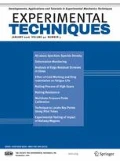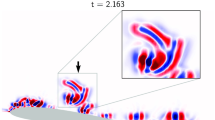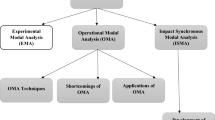Abstract
The high and slender historical masonry minarets are vulnerable to the static and dynamic loads. Performance analyses of minarets are implemented using three-dimensional numerical models in recent years. However, the complex and inhomogeneous nature of historical structures increases the likelihood of incorrect creation of numerical models. For that reason, it is important to know the experimental dynamic characteristics of masonry minarets to update the numerical models accordingly. However, it is very difficult and costly to conduct in-situ tests for every minaret. The present paper aims to develop a simplified fundamental frequency formula based on in-situ ambient vibration tests for historical masonry stone cylindrical minarets. Nineteen historical masonry stone cylindrical minarets are chosen for this purpose. Firstly, experimental frequencies, mode shapes and damping ratios of the selected minarets are determined and evaluated using the experimental measurements. Enhanced Frequency Domain Decomposition (EFDD) technique is used to obtain the experimental dynamic characteristics. Based on the obtained experimental natural frequencies, the correlation of the first natural frequency with various geometrical parameters of minaret is demonstrated by the regression analyses. In order to verify numerical models of the masonry stone cylindrical minarets, a simplified fundamental natural frequency formula based on the minaret geometrical dimensions is proposed using the experimental natural frequencies. In addition, coefficients for estimating the second and third frequencies are also presented. It has been observed that the proposed formula gives very consistent results with the measurement and literature data.







Similar content being viewed by others
References
Acar R (2009) “Anıtsal Kule Türü Yapıların Deprem Davranışlarının İncelenmesi ve Alternatif Sistemlerin Geliştirilmesi”, MSc Thesis, Karadeniz Technical University, Trabzon (in Turkish)
Bartoli G, Betti M, Marra AM, Monchetti S (2017) Semiempirical formulations for estimating the main frequency of slender masonry towers. J Perform Constr Facil 31(4)
Başaran H, Demir A, Ercan E, Nohutçu H, Hökelekli E, Kozanoğlu C (2016) Investigation of seismic safety of a masonry minaret using its dynamic characteristics. Earthquake and Structures 10(3):523–538
Bayraktar A, Sevim B, Altunışık AC. and Türker T (2009a) “Analytical and operational modal analyses of Turkish style reinforced concrete minarets for structural identification”, Society for Experimental Mechanics, dynamic testing of civil engineering structures series, March–April, 65-75
Bayraktar A, Türker T, Sevim B, Altunışık AC, Yıldırım F (2009b) Modal parameter identification of hagia sophia bell tower via ambient vibration test. J Nondestruct Eval 28(1):37–47
Bayraktar A, Altunisik AC, Sevim B, Turker T (2011) Seismic response of a historical masonry minaret using a finite element model updated with operational modal testing. J Vib Contr 17:129–149
Bayraktar A, Çalık İ, Türker T (2013) “Restorasyon sonrası tarihi sundura camisi ve minaresinin çevresel titreşim testi yöntemiyle dinamik özelliklerinin belirlenmesi”, Vakıf Restorasyon Yıllığı, VGM İstanbul I. Bölge Yayını 6:53–62 (in Turkish)
Bayraktar A, Altunişik AC and Muvafik M (2014) “Damages of minarets during Erciş and Edremit earthquakes, 2011 in Turkey”, Smart Structures and Systems, 14 (3)
Bayraktar A, Çalık İ, Türker T, Ashour A (2018), “Restoration effects on experimental dynamic characteristics of masonry stone minarets”, Materials and Structures, 51 (6), Article number 141
Brincker R, Zhang L and Andersen P (2000), “Modal identification from ambient responses using frequency domain decomposition”, 18th international modal analysis conference, 4062, 2, 625–630, San Antonio, USA
Çalık İ, Demirtaş B, Bayraktar A, Türker T (2012) Yığma taş minarelerin analitik ve deneysel yöntemlerle güvenliğinin belirlenmesi: Trabzon Muhittin Camisi Minaresi Örneği. Vakıflar Dergisi 38:121–140 (in Turkish)
Çalık İ (2017), “Tarihi Cami ve Minarelerin Deneysel Dinamik Karakteristiklerinin Belirlenmesi ve Restorasyon Etkilerinin Değerlendirilmesi”, PhD Thesis, Karadeniz Technical University, Trabzon (in Turkish)
Erdogan YS, Kocatürk T and Demir C (2017), “Investigation of the seismic behavior of a historical masonry minaret considering the interaction with surrounding structures”, J Earth Eng, 1-29
Erdil B, Tapan M, Akkaya İ, Korkut F (2018) Effects of structural parameters on seismic behaviour of historical masonry minaret. Periodica Polytechnica Civil Engineering 62(1):148–161
Faccio P, Podestà S, Ve Saetta A (2009) Campanile della Chiesa di Sant’Antonin, Esempio 5. In: In Linee guida per la valutazione e riduzione del Rischio Sismico del Patrimonio Culturale Allineate alle Nuove. Norme Tecniche per le Costruzioni, Venezia
Hejazi M, Moayedian SM, Daei M (2016) Structural analysis of Persian historical brick masonry minarets. J Perform Constr Facil 30:2
Hacıefendioğlu K, Maraş EE (2016) Photogrammetry in documentation and ambient vibration test of historical masonry minarets. Exp Tech 40(6):1527–1537
Jacobsen NJ, Andersen P, Brincker R (2006), “Using enhanced frequency domain decomposition as a robust technique to harmonic excitation in operational modal analysis”, proceedings of ISMA2006: international conference on noise and vibration engineering, September, Leuven, Belgium
Kocatürk T, Erdoǧan YS (2016) Earthquake behavior of M1 minaret of historical sultan Ahmed mosque (blue mosque). Struct Eng Mech 59(3):539–558
Livaoğlu R, Baştürk MH, Doğangün A, Serhatoğlu C (2016) Effect of geometric properties on dynamic behavior of historic masonry minaret. KSCE J Civ Eng 20(6):2392–2402
Mirtaheri M, Abbasi A, Salari N (2017) A seismic behavior and rehabilitation of the historic masonry minaret by experimental and numerical methods. Asian Journal of Civil Engineering 18(5):807–822
OMA (2006), “Operational Modal Analysis”, Release 4.0, Structural Vibration Solution A/S, Denmark
Oliveira CS, Cakti E, Stenge D, Branco M (2012) Minaret behavior under earthquake loading: the case of historical Istanbul. Earthq Eng Struct Dyn 41:19–39
Peeters B (2000), System Identification and Damage Detection in Civil Engineering, PhD Thesis, K.U, Leuven, Belgium
Pekgökgöz RK, Gürel MA, Mammadov Z, Çili F (2013) Dynamic analysis of vertically post-tensioned masonry minarets. J Earthq Eng 17(4):560–589
PULSE (2006), “Analyzers and solutions”, release 11.2. Bruel and Kjaer, sound and vibration measurement A/S, Denmark
Rainieri C, Fabbrocin G (2011),” Predictive correlations for the estimation of the elastic period of masonry towers”, In Proceedings of Experimental Vibration Analysis for CivilEngineering Structures (EVACES), Varenna, 513–520,
Shakya M, Varum H, Vicente R, Costa A (2016) Empirical formulation for estimating the fundamental frequency of slender masonry structures. International Journal of Architectural Heritage 10(1):55–66
Ural A, Fırat FK (2015) Evaluation of masonry minarets collapsed by a strong wind under uncertainty. Nat Hazards 76(2):999–1018
Tuluk Öİ, Doğangün A, Livaoğlu R, Acar A (2006) Mimari ve taşıyıcı sistem özelliği bağlamında Türk minare geleneği. Yapı Dünyası Dergisi 122:41–49 (in Turkish)
Acknowledgements
This research was implemented by using the measurement system provided by the projects from TUBITAK and Karadeniz Technical University under Research Grant No. 106 M038, 2005.112.001.1and 2006.112.001.1, respectively. Many thanks to Trabzon Regional Directorate of Foundation and its valuable personnel for their supports and permissions.
Author information
Authors and Affiliations
Corresponding author
Ethics declarations
Conflict of Interest
The authors declare that they have no conflict of interest.
Additional information
Publisher’s Note
Springer Nature remains neutral with regard to jurisdictional claims in published maps and institutional affiliations.
Rights and permissions
About this article
Cite this article
Bayraktar, A., Çalik, İ. & Türker, T. A Simplified Fundamental Frequency Formulation Based on In-Situ Tests for Masonry Stone Minarets. Exp Tech 46, 225–238 (2022). https://doi.org/10.1007/s40799-021-00474-0
Received:
Accepted:
Published:
Issue Date:
DOI: https://doi.org/10.1007/s40799-021-00474-0




